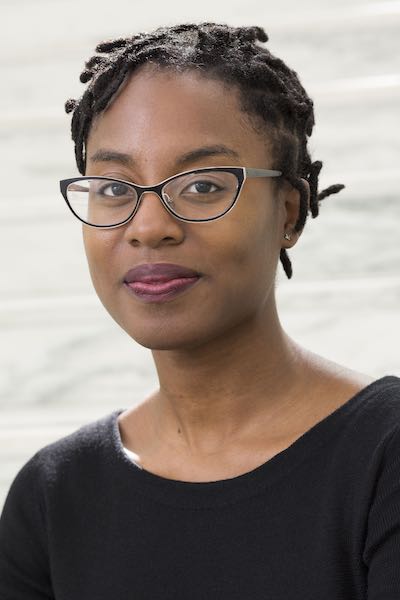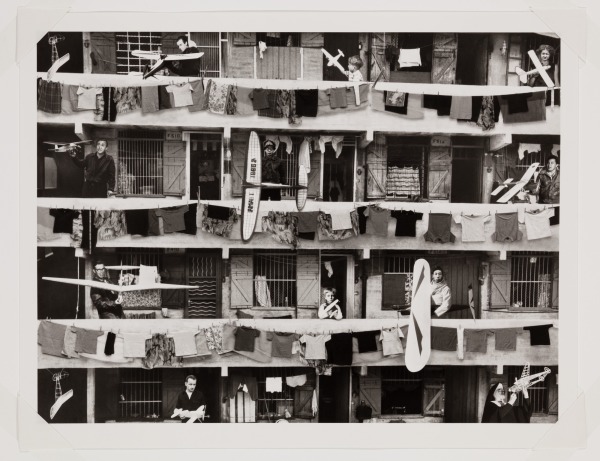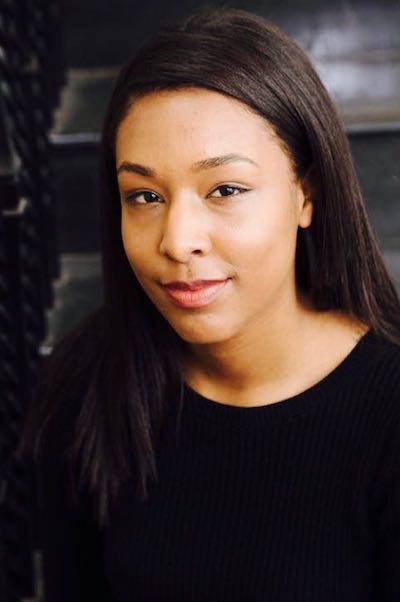Who Is the Contemporary Art Curator of Detroit Institute of Arts
How long do you lot have to live somewhere before you lot can call it dwelling house?
This is a surprisingly tricky question to reply. Is information technology technical, like when you attain citizenship or can qualify for city services? Or is information technology less concrete, more almost when a place begins to "experience" like home?
In a urban center like Detroit and its surrounding suburbs, where migration and immigration greatly impact to the expanse'southward demographics, home is a topic that comes up a lot. It'south no wonder then that Taylor Renee Aldridge and Lucy Mensah, assistant curators of the Contemporary Galleries of the Detroit Plant of Arts (DIA), chose the topic for their first exhibition "Making Home," on view until June 2018.
Aldridge and Mensah are two of the three new hires to the DIA'southward Contemporary Galleries. Aldridge, a native Detroiter, joined the team in November 2016 afterward spending some time abroad from the city to pursue her studies.
Mensah, a Philadelphia native and recent Detroit transplant, joined the squad in March 2017.
 Lucy Mensah
Lucy Mensah
"I discover home to be something that I'one thousand perpetually looking for and which has different permutations depending on where I am. Beingness in Detroit I've been more reflective well-nigh home," Mensah says. "That's what we want to reflect in the show. We didn't necessarily want to go for a melancholic prove, just it just turned out that style."
Melancholy also happens to be one of the exhibition's eight subcategories, the others existence The Sublime, Babyhood Imagination, Domesticity, (In)Security, Habitation and Community, Urbanization, and Deportation. These headings help the viewer work through some of the many meanings of habitation. "Nosotros wanted to select works that either affirm why we believe notions about home or challenge them or do both in one work," Mensah says.
In the piece "Untitled" by Lithuanian artist Romualdas Pozerskis, a woman is seen fleeing from a business firm engulfed in flames, presumably carrying cherished or important possessions. The photo hangs under the Deportation heading and is meant to show the "precarious nature of structures made to protect u.s.a.."
Even though it doesn't depict a Detroit dwelling, information technology definitely strikes a chord in a identify known as "arson capital" for the number of buildings which catch fire each yr.
"Information technology wasn't lost on the states that home is very present in terms of migration, immigration, environmental disasters," says Aldridge. "People losing their homes and having to think almost what information technology means to lose a home and try to notice a new one."
"Making Home" features near 50 works, mostly photographs, all belonging to the museum'south permanent collection, from new acquisitions like Carrie Mae Weems' "Kitchen Tabular array Series" to Charles McGee's "Urban Extract 2." The latter, a massive exterior wall excavated by the acclaimed Detroit artist, has been a part of the museum's collection since 1983, but was recently rediscovered by the curators. The Weems series, nether the Domesticity heading, is a combination of photos that show a woman in various arrangements around a kitchen table, as the title suggests, and text prints that help characterize the images.
 "Chai Wan Four," 2008, Jane Hammond, selenium-toned gelatin silvery print - courtesy Jane Hammond and the Detroit Institute of Arts
"Chai Wan Four," 2008, Jane Hammond, selenium-toned gelatin silvery print - courtesy Jane Hammond and the Detroit Institute of Arts
Both Aldridge and Mensah take strong literary ties. Aldridge co-founded the online arts criticism journal Arts.Black, and Mensah's academic focus was in literature, not the visual arts, making her a unique pick for the Museum.
The two began sharing texts and ideas even before Mensah officially began working at the Museum.
"Nosotros were just dialoguing well-nigh different topics that resonate with the local community and audiences that could be universal," says Aldridge. "We both had  Taylor Renee Aldridge bonded on two specific pieces of literature—Homegoing by Yaa Gyasi and Warmth of Other Suns by Isabel Wilkerson—and we were thinking about themes of migration and exile and belonging that were sparked out of our involvement of these literary works."
Taylor Renee Aldridge bonded on two specific pieces of literature—Homegoing by Yaa Gyasi and Warmth of Other Suns by Isabel Wilkerson—and we were thinking about themes of migration and exile and belonging that were sparked out of our involvement of these literary works."
The exhibition is not the pair'southward only focus. Their major long-term project is the reinstallation of the Contemporary Galleries, which, for the most part, have gone untouched since 2007. Along with head curator Laurie Ann Farrell, they take until 2020 to enquiry the current holdings (which number around 3,500), acquire new works, and reinstall the galleries.
The new curators work collaboratively, but each bring something dissimilar to the tabular array. Farrell brings years of museum experience—a necessary skill for this kind of overhaul. Mensah's rich literary groundwork provides a unique arroyo to exhibition planning and installation enquiry. While Aldridge'southward Detroit roots allow her to be the main betoken of contact between the DIA's Contemporary Galleries and other Detroit institutions and artists.
They're currently in the research phase of the re-installation process, which involves traveling to see exhibitions, reviewing the currently holdings, and meeting each week to each share information about pieces in the drove.
"It's a revisionist sort of approach," says Aldridge. "Nosotros take these actually not bad holdings, we take majority white male person artists, but at that place were amazing women, amazing artists from all over the world. How do we fill in these gaps?"
Contemporary art is a special genre because curators often piece of work with living artists. It puts the curators in a unique position where they can back up artists, legitimizing their work in a manner, and put information technology into a national or global context.
"The subtitle is 'Thinking Globally, Acting Locally,'" Mensah says. "We take a very strong collection of piece of work—all the artists who associate with existence really of import for contemporary galleries to have. But we're looking more broadly and thinking what is the international scope? What are the respective art movements happening in other countries? That'due south where the research and travel comes in."
Once complete, the newly installed galleries will remain on view for at least another decade. Aldridge, Farrell, and Mensah represent the largest curatorial staff the Contemporary Galleries have seen in decades. It's an opportunity to reflect on the work Detroit has produced in the past 30-plus years, to tell stories that are important to Detroit right now and in the time to come.
Source: https://www.modeldmedia.com/features/DIA-contemporary-curators-020518.aspx